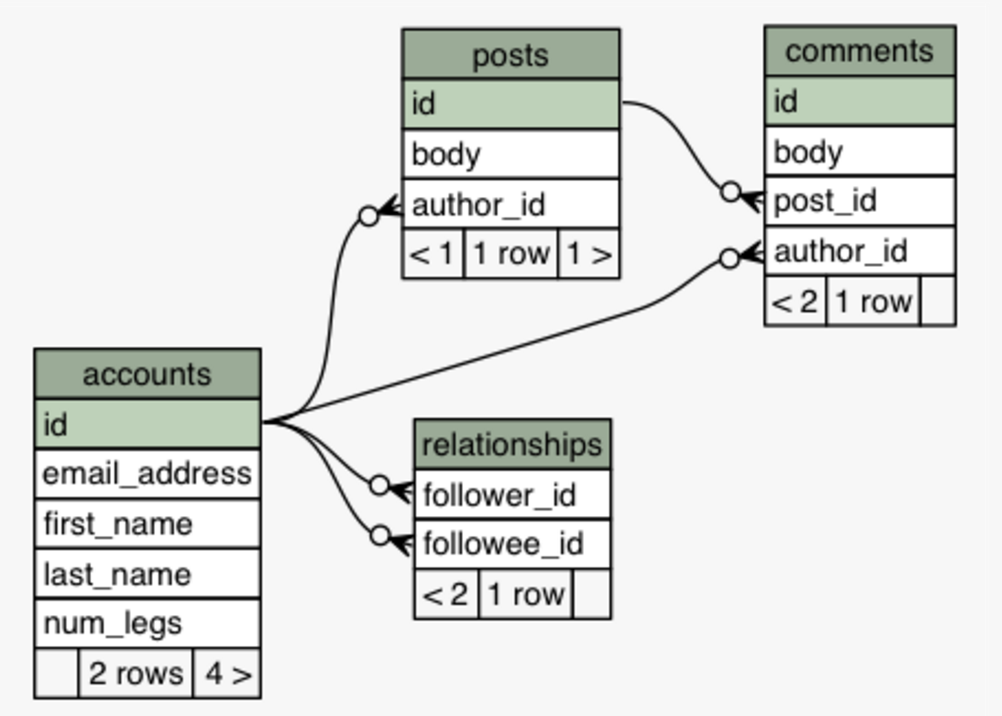We'll set up the example API in the demo. You can view the source code here. If you would like to set this up from scratch, feel free the use the sample data provided for SQLite3 at /data/demo-data.sl3.
Defining SQL Schema
We'll set up a little API for a simple blog site for Users that can make Posts as well as Comments on people's posts. We will also let them follow other users. Here is a picture of the schema.

I'll omit the code to set up the SQL tables. You can find the implementation here. Now let's take a look at the application layer.
Declaring GraphQL Schema
Here is how the graphql-js schema would look.
import { GraphQLSchema } from 'graphql'
import { GraphQLObjectType, GraphQLList, GraphQLString, GraphQLInt } from 'graphql'
const User = new GraphQLObjectType({
name: 'User',
fields: () => ({
id: {
type: GraphQLInt
},
email: {
type: GraphQLString
},
idEncoded: {
description: 'The ID base-64 encoded',
type: GraphQLString,
resolve: user => toBase64(user.idEncoded)
},
fullName: {
description: 'A user\'s first and last name',
type: GraphQLString
}
})
})
const QueryRoot = new GraphQLObjectType({
name: 'Query',
fields: () => ({
users: {
type: new GraphQLList(User),
resolve: () => {} // TODO
}
})
})
export default new GraphQLSchema({
description: 'a test schema',
query: QueryRoot
})
This won't work yet. There are several things missing. Next, we'll map this object type to our accounts table in SQL.